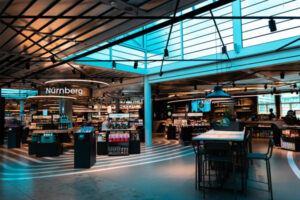Rents on Via Monte Napoleone in Milan rose 41.2% in a single year, making it the fastest-growing high-street rental market in Europe in Q4 2015, ahead of Rome’s Via Condotti (37.5% growth) and Barcelona’s Diagonal (33.3%). Elsewhere, smaller but sharp increases have been seen in Paris, London, Dublin, Venice, Lisbon, and Madrid. As a result of this extraordinary growth, high street retail is now the only commercial real estate sector in Europe where rents on a weighted-average basis are above their previous peaks and yields are below pre-recession levels
Focus on key city locations
Retailers’ focus on key city locations is a response to the growing significance of urban living, driven by changes in lifestyles and demographics as well as city tourism. Monika Sujkowska, a Senior Analyst in Cushman & Wakefield’s Investment Strategy team, said: “The result of this re-urbanization trend is more densification, but also a drive for smarter, more creative urban designs and more effective transportation, allowing for healthier, less stressful environments and better accessibility and proximity at an affordable cost. From the retail perspective, mixed-use, centrally-located schemes and high-street shops in close proximity to culture, business, education, restaurant, and tourism hubs appear to be ideal solutions to these challenges. They allow residents not just to shop, but also work and socialize all in the same place, even as they grant retailers the benefits of high natural footfall. It’s not just a matter of footfall and turnover, however. In a multi-channel world, the impact of the physical property and its location on branding has become more important, with the right property moving up the retailers’ value chain. By extension, the retail submarket’s brand and that of the city are of greater significance and greater potential value to retailers. This explains the trend towards big-statement outlets in city centers, but also a parallel trend towards establishing a presence in emerging shopping districts and the best streets in second-tier cities in an attempt to spread and strengthen brand awareness.”
Michael Rodda, Head of European Retail Investment at Cushman & Wakefield, said: “Growth in demand for centrally-located retail space has been extraordinary but has not been geographically even. As retailers seek new expansion opportunities, this growth will spread further from established shopping destinations such as the key luxury high streets in Paris, London, Rome, Milan, Barcelona, and Madrid to second-tier cities and smaller countries in 2016. Retailers are likely to target the streets that are best placed to reap the benefits of increasing economic power and wealth growth in their local markets.”
Cushman & Wakefield’s report highlights hot spots for high-street retail investment and details trends at play in each market.
Central and Eastern Europe
The Central and Eastern Europe region is tipped as one of the main areas of growing demand from retailers going forward on the back of an ongoing urban renaissance, led by major Polish cities and Prague. Following two decades of shopping-center dominance, a transformation of the city center is underway driven by growing and increasingly wealthy middle classes who seek a more exciting way to shop. Urban planners and developers have already woken up to the potential of this trend and have incorporated attractive retail and restaurant space into modern blocks while revitalizing historic tenement houses, old market halls, and factories—a development particularly evident in Poland. High-quality, mixed-use schemes appear to be particularly suitable for unlocking the region’s high-street potential given the fragmented ownership structures of traditional high-street shops.
Southern Europe
Southern Europe features as an investment destination as well, with the recent boom in prime high streets in core cities in Spain and Portugal expected to spread to select streets off the main thoroughfares and regional cities. Indeed, robust rental growth has already been recorded in Palma de Mallorca (18% in the last 18 months) and Puerto Banus in Spain and in smaller Portuguese cities with low international brand penetration. The success of Madrid’s Calle Orense is an example of a revival in secondary high streets. In Portugal, a recent relaxation of planning laws and tax incentives for building provide an additional impetus.






